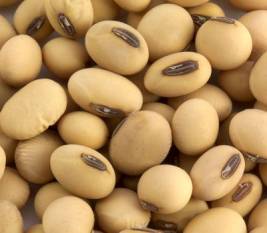MUMBAI, 6 July 2025: How do rumours spread in the commodity business? A group of people who are in loss creates a cartel and spread untruths or half-truths in the market, stupid people propagate them and naive or new investors accept and imitate them.
Such incidents were the reason for imposing restrictions on futures of some agricultural commodities including soybean in the year 2021. The pain of which is still being suffered by farmers and millers.
Today, when there are no soybean futures, everyone understands that the risk of their business has increased a lot. Recently, the Maharashtra government has started a hedging desk to educate farmers on hedging through the SMART project.
But farmers raised the question that if there is no futures available, then where is the hedging? That is why once again the farmers of Maharashtra have demanded the resumption of soybean futures.
Soybean sowing has started recently, so even though the burden of soybean income in the current market is low, soybean prices have fallen to the bottom. The central government has announced an increase of INR 436 per quintal in the minimum support price (MSP) of soybean for the upcoming Kharif season at the end of May-2025.
Therefore, farmers should get INR 5328 per quintal of soybean at the rate of MSP in the upcoming season. But currently, the price of soybean per quintal in the SPOT markets is in the range of INR 4400 to INR 4550. In such a situation, no miller or trader will pay the farmer at the MSP.
Farmers are expected to get this price only from the government procurements during the season. But the big question here is, when will the government procure and for how many tons? The government has calculated the production cost for soybean farmers and created a table that allows farmers to get up to 50 percent profit. But once again, how much of India's total soybean production will the government buy at the MSP?
Looking at last year's figures, the government had estimated that 133 lakh tonnes of soybean would be produced in India. Against this, by the end of February-25, barely 15 lakh tonnes of soybean were purchased at the minimum support price.
Out of which, the maximum purchase of 8.40 lakh tonnes was from Maharashtra. While the rest was purchased in Rajasthan and Madhya Pradesh. Only 48,000 tonnes were procured in Gujarat. After the restrictions on futures came in the year 2021, the price of soybean has rarely been higher than the support price fixed by the government.
If we look at the figures of sowing across the country, soybean has been sown in 32.04 lakh hectares so far. Which was 31.78 lakh hectares in the same period last year. Now soybean sowing is also increasing in Gujarat.
This time, soybean has been sown in 1,20,560 hectares in Gujarat so far. Which is 45 percent higher than the 42,431 hectares sown in the same period last year. The figures indicate that this time there will be a significant increase in soybean cultivation in Gujarat. India has exported 21,33,000 and 21,27,000 tonnes of soybean meal in the year 2023-24 and 2024-25 respectively. Which is the highest in the last five years.
India's exports are increasing but exporters do not have any hedging facility to reduce the price risk against their open positions.
If there is any problem with the soybean futures or Options contract specifications, it can be changed. But the facility of option trading is urgently needed for farmers because with the increase in cultivation, production will also increase and soybean prices will show new lows.
In such a situation, it is also necessary for traders and exporters to start futures to safeguard them from the risk of price fluctuations.
By Kalpesh Sheth is an commodities expert with years of experience.
Image credit: scoular.com




















